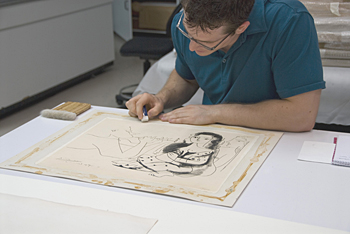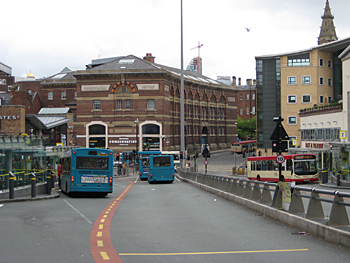My main responsibility this summer has been to unframe and assess the condition of 15 fine art prints from the 1960s and '70s. The artists are both well-known and lesser-known and from various parts of the world. Some of the more recognizable names are Pablo Picasso, David Hockney and Fernand Leger.
The Picasso lithograph was the first piece that I treated this summer, and I just recently finished it. As with all works of art on paper, the print was sensitive to light and had formed a light tan discoloration within the paper. As conservators, we are responsible for not only fixing damage that has taken place, but also prolonging the usable life of the objects that we are charged with caring for. Paper conservators will routinely use water, in a controlled manner, to remove damaging acids that degrade the paper fibers, while at the same time restoring “health” to the sheet of paper. This is what I did as part of the treatment of the Picasso print, and I'm happy to say that it looks much better than it did before.
Treating objects is not the only thing that the Conservation Centre has offered me, though. I have participated in three exhibit condition checks, where the conservators make sure that the art in a new exhibit has been cared for properly and that all of the objects' conditions are well-documented.
Another really exciting part of the Conservation Centre is called Conservation Technologies, and they incorporate laser technology into art conservation. Lasers are used for such gentle tasks as documenting objects in three dimensions, to the more hands-on application (but still gentle) of laser cleaning. I was fortunate enough to take a laser-cleaning workshop and was able to see how incredibly useful this technology can be in art conservation.This internship has not only offered me excellent work experience that I will draw off of for the rest of my life, but I have also gotten to visit some incredible places. I started by flying into Dublin and spending a day there before coming to Liverpool. Close to Liverpool is Manchester, home of Manchester United and some gorgeous architecture; Port Sunlight Village, which looks like a set from The Stepford Wives; and Chester, which was begun by the Romans in AD 74. Before I return to the United States, I will have also spent time in Paris, London and Amsterdam. Who said work couldn't be fun!



